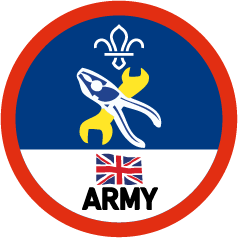
Fuel your imagination and develop problem-solving and critical thinking skills. Develop your practical vehicle maintenance knowledge.
Choose 1 of the following options:
Motor car
- Learn the principles of operating an engine.
Make sure you understand the function of the clutch, gearbox and rear axle differential.
- Show how to check and refill the windscreen wash bottle of a car.
- Show how to change a bulb at the front and in the rear light cluster of a car.
- Show how to check the level of coolant in the radiator, ‘top up’ the radiator and explain the importance of anti-freeze.
- Show how to check tyre pressures and inflate a tyre correctly.
- Remove and replace a road wheel.
- Explain what to look for when checking that a tyre conforms to the legal requirement. Find out why tyres with different amounts of wear should not be mixed on the same axle.
- Show how to change a wiper blade.
- Explain the outline requirements for an MOT road test.
Power boat
- Complete one of these activities (part 1):
- Discuss the principles and performance of several types of motorboat engines, other than two-stroke.
Show that you know the maintenance needed for a familiar type of marine internal combustion engine, other than two-stroke.
- Assist with the maintenance, dismantle, service and reassemble an outboard engine.
Show how to fit it properly to the transom of a boat. Explain how to detect minor faults in starting and running whilst afloat.
- Complete one of these activities (part 2):
- As driver or mechanic member of a power boat’s crew, help to prepare the boat for a voyage by checking the engine for possible minor faults, checking the fuel supply and pump and mustering the fire-fighting equipment.
Show you know how to leave the engine in a proper manner and how to drain the engine in an emergency.
- Check the engine of a motorboat in preparation for a cruise or expedition, making sure there is fuel that is stored safely, an adequate tool kit and effective fire-fighting apparatus.
Accompany the expedition, either as the mechanic or assistant, and be fully or jointly responsible for the operation, care and maintenance of the engine throughout.
Aircraft
- Learn the basic principles of one these component parts and be able to point them out:
- an aircraft piston engine
- an aircraft gas turbine engine.
- Learn the basic principles of flight and airframe construction of a fixed wing aircraft.
- Learn and then demonstrate Aircraft Marshalling signals used by day and night.
- Show you can carry out any four of these:
- replenishing a light aircraft fuel and oil system safely
- rigging and de-rigging a glider
- picketing a light aircraft
- changing plugs on a light aircraft engine
- inspecting aircraft main and tail or nose wheel tyres for serviceability
- repairing a small tear in the fabric surface of a light aircraft or glider
- checking the control system of a light aircraft or glider for correct sense of movement.
Motorcycle or scooter
- Learn the principles of operating an engine. Learn about the function of the clutch, gearbox, carburettor and transmission of a motorcycle.
- Remove and replace a road wheel.
- Check and top up the level of the engine oil.
- Explain how to adjust the tension of the final drive chain.
- Show how you change a bulb at the front and in the rear light cluster.
- Show how you would check tyre pressures and inflate a tyre correctly.
- Explain what to look for when checking that a tyre conforms to the legal requirement.
- Explain the outline requirements for an MOT road test.
Tips
- Remember that the manufacturer's guidelines must be followed at all times
July 2024.
Requirements can be adapted to suit each young persons abilities. See our guidance on flexibility.